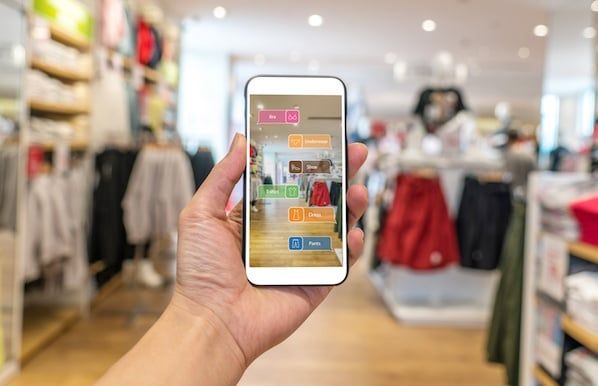Technology has revolutionized the way we live, work, and interact with the world. One such breakthrough is augmented reality (AR), which has the potential to transform the retail industry. By blending the digital and physical worlds, AR is reshaping shopping experiences, making them more immersive, interactive, and personalized than ever before.
The Power of Augmented Reality
Augmented reality brings virtual elements into the real world, enhancing our perception of reality. Through the use of smartphones, tablets, or dedicated AR headsets, consumers can overlay computer-generated content onto their physical environment. This technology has already been widely adopted in gaming and entertainment, but its potential in the retail space is just starting to be realized.
Enhanced Product Visualization
One of the biggest challenges in online shopping is the inability to physically interact with products. AR solves this problem by allowing customers to visualize products in their real-life environment. Want to see how that couch would look in your living room? Simply point your phone at the space, and the AR app will show you a virtual representation of the couch, enabling you to make more informed purchase decisions.
Try Before You Buy
AR goes beyond visualizing products by enabling customers to virtually try them on or test them out. From trying on clothes to experimenting with different hair colors, AR-powered apps make the shopping experience more interactive and personalized. This technology not only helps customers make better purchasing decisions but also reduces the need for returns, ultimately saving retailers time and money.
Personalized Recommendations
AR technology can gather data about a customer’s preferences and behavior, allowing retailers to deliver highly personalized recommendations. By analyzing past purchases, browsing history, and even facial expressions, AR-powered apps can suggest products tailored to each individual’s preferences. This hyper-personalization creates a more relevant shopping experience and increases the likelihood of making a sale.
Virtual Shopping Assistants
Imagine having a virtual shopping assistant guiding you through a store, offering personalized recommendations, and answering your questions. AR-powered apps can provide users with real-time information about products, such as pricing, availability, and customer reviews. This virtual assistant not only enhances the shopping experience but also reduces the workload on sales associates, allowing them to focus on providing higher-value customer service.
Interactive In-Store Experiences
AR is not only transforming online shopping but also reshaping brick-and-mortar stores. Retailers are using AR-powered displays and interactive mirrors to engage customers in-store. These displays can show additional product information, offer styling suggestions, or even create immersive brand experiences. Such interactive experiences blend the convenience of online shopping with the sensory appeal of physical stores, creating a unique and memorable shopping experience.
The Future of Augmented Reality in Retail
The potential of augmented reality in the retail industry is immense. As technology continues to advance and become more affordable, we can expect AR to become a standard feature in the retail sector. From virtual try-on experiences to seamless personalized recommendations, AR will continue to blur the line between the digital and physical shopping worlds.
In conclusion, augmented reality is revolutionizing the retail industry. By enhancing product visualization, enabling virtual try-ons, delivering personalized recommendations, providing virtual shopping assistants, and creating interactive in-store experiences, AR is transforming shopping experiences like never before. Retailers need to embrace this technology to stay ahead in an increasingly competitive landscape, where personalized and immersive experiences are the key to success.
